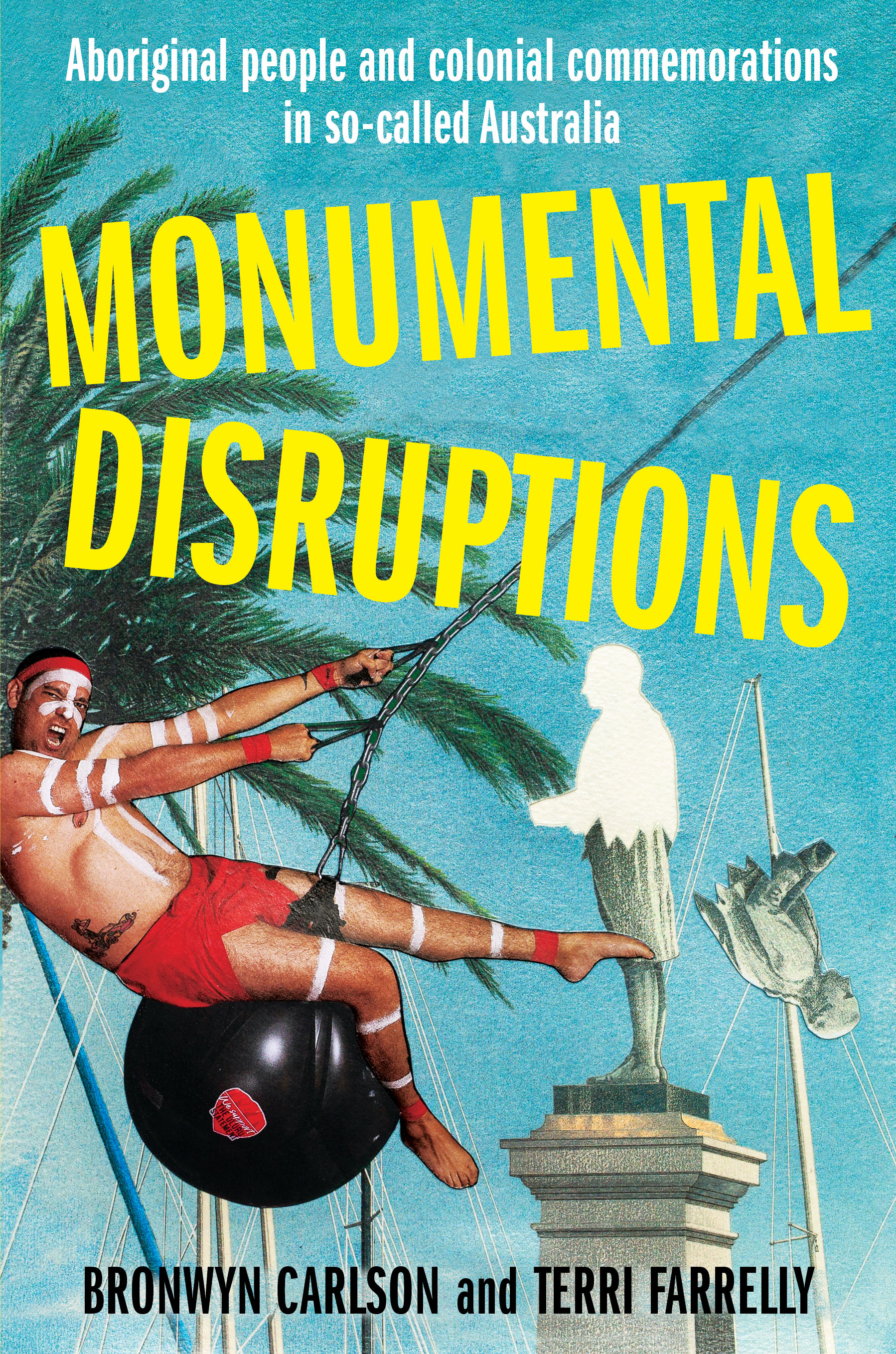In the aftermath of Australia’s James Cook anniversary commemorations in June 2020 and the statue-toppling Black Lives Matter protests in the USA, dozens of police were sent to guard a statue of Cook in Hyde Park, Sydney. Despite the police presence, two women spraypainted ‘sovereignty never ceded’ across the statue.
Around the world, societies are reassessing memorials that no longer reflect today’s values. Should such monuments be removed, destroyed or amended?
Monumental Disruptions: Aboriginal people and colonial commemorations in so-called Australia by Bronwyn Carlson and Terri Farrelly is a forthcoming title from Aboriginal Studies Press that is essential reading for anyone interested in how a society commemorates and acknowledges its complex history. The book, set for release in February 2023, investigates why commemorations were erected and the meaning these have for First Nations people in Australia while comparing Australia’s experience with that in other countries.
Professor Bronwyn Carlson is an Aboriginal scholar who was born and lives on D’harawal Country in NSW. She is the Head of the Department of Indigenous Studies at Macquarie University and the Director of the Centre for Global Indigenous Futures. Professor Carlson is the founding and managing editor of the Journal of Global Indigeneity and a Fellow of the Australian Academy of the Humanities.
‘Every year we are force-fed by media and politicians the idea that “Australia Day” is about reflecting on our past, respecting all Australians and celebrating our unique Australian identity,’ Professor Carlson says. ‘Indigenous peoples are demanding truth-telling and colonial commemorations are part of that. Globally, monuments have been toppled because they do not represent an honest account of historical events, and the praise bestowed upon many have been found undeserving.
‘Our book provides an account, not yet heard, that demonstrates the ways in which change is already happening.’
From Monumental Disruptions (pp 27-28):
While those with the power can choose what is commemorated and how, they cannot completely control the meaning of the commemoration—this will evolve under the pressures of changing social interests and ideologies (Baxter 2019). Today we see evidence of this in the way monuments that were once sites ‘of shared national values and ideals’ are evolving to become deliberate sites ‘of contested and competing meanings’ (Young 2000 cited in Nettelbeck 2011:1116–17). In 1997 Chris Healy, now into a third decade of exploring and writing about the relationship between historical and cultural studies, published From the ruins of colonialism: history as social memory, in which it is suggested ‘that such colonial social memories constitute a world both in ruins and of ruins, a world of ruination and a historical dream which has been ruined’ (Healy 1997:6). The historical dream that our colonial commemorations would have us believe has been ruined by the emergence and ever-increasing demands for truth-telling.
Aboriginal people are missing from colonial commemorations because they are largely, and deliberately, ‘missing’ from history during this period. If we were to think of the history of this continent as a book, then British settlement would comprise the last paragraph of the final chapter, and yet it is this last paragraph that history is almost solely dedicated to, regardless of the 65,000-plus years of Aboriginal and Torres Strait Islander inhabitation of lands and waters on and surrounding the continent now known as Australia.
Dr Terri Farrelly lives and works on D’harawal Country as an Adjunct Fellow and Research Associate with the Department of Indigenous Studies at Macquarie University.
‘For me as a settler scholar who grew up surrounded by these statues and monuments and place names, the big moment of enlightenment in researching this book was gaining an understanding of the agenda behind these colonial commemorations,’ Dr Farrelly says. ‘The agenda was, and continues to be, Black erasure and white permanence - to assert that Aboriginal peoples were never here, and that white people have been here a lot longer than they actually have. I think this is something many non-Indigenous Australians have never thought about.’
From Monumental Disruptions (p 31):
Erasing Aboriginal peoples and asserting white occupation is bolstered by colonial commemorations, which serve as reminiscences of settlement. Commemorations are living monuments that fortify colonial ideologies. They are visible icons that reinforce the ways ‘settlers and their descendants sought, through remembrance, to secure their stories of rightful possession’ (Attwood 2009 cited in Nettelbeck and Foster 2010:53.3). Aboriginal scholar Tony Birch has spoken out about this agenda for many years. Alongside Aboriginal colleague Gary Foley, Birch is a founding member of the Melbourne School of Discontent – a collective of like-minded Aboriginal and Torres Strait Islander folk who work to examine, analyse and critically dissect the popular and accepted narratives of Australian history. Birch (2020) describes colonial commemorations as the antithesis of a diverse society, and of Indigenous nations whose lands have been stolen through colonisation and damaged through climate injustice. They are attacks on Aboriginal peoples, and on Country, inhibiting the potential for truth-telling and the ability to produce the more honest and mature story that the nation of so-called Australia desperately needs (Birch 2020). The reader is urged to think not so much about the individual monument, but of its relationship to the way colonial society covets Country and how the monument works to write a new mythological story of Country.
Aboriginal Studies Press is the publishing arm of AIATSIS.
Monumental Disruptions: Aboriginal people and colonial commemorations in so-called Australia by Bronwyn Carlson and Terri Farrelly is released on 20 February 2023 and will be available in all bookstores.
- Paperback
- 368 pp
- Released 20 February 2023
- ISBN 9780855751159 / ISBN 9780855751197 (ePub)
Media enquiries
commsmedia@aiatsis.gov.au
0476 843 522
